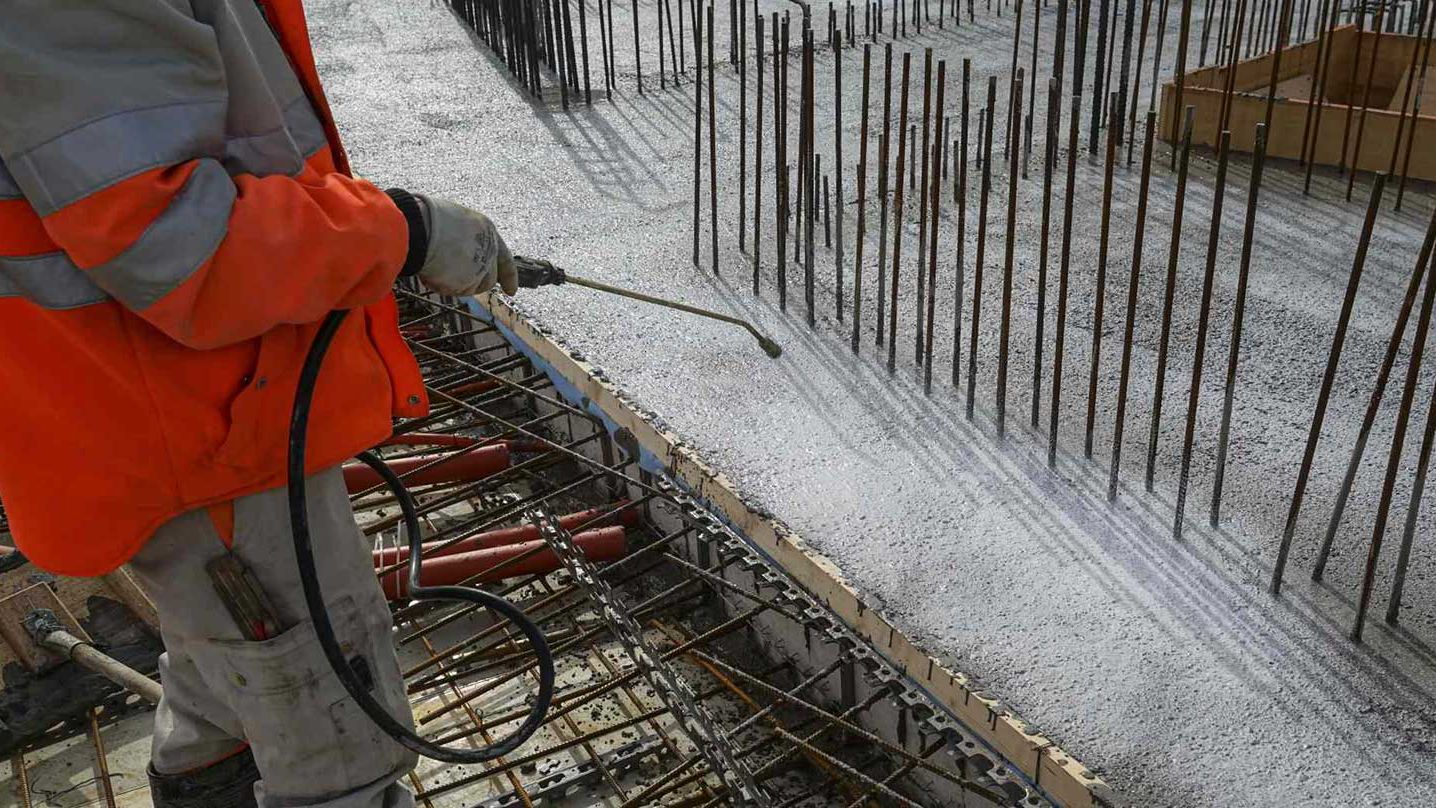How to Protect Fresh Concrete
Concrete quality and durability are determined by the density of the binder matrix, not just high compressive strength. The lower the porosity and the denser the hardened cement paste near the surface, the higher the resistance to external influences, stresses and attack.
To achieve this in hardened concrete, several measures have to be undertaken to protect the fresh concrete, particularly from:
- Premature drying due to wind, sun, low humidity, etc
- Extreme temperatures and damaging rapid temperature changes
- Rain
- Thermal and physical shock
- Chemical attack
- Mechanical stress
Why should concrete be cured?
Protection from premature drying is necessary so that the strength development of the concrete is not affected by water removal. The consequences of premature water loss are:
- Low strength in the parts near the surface
- Tendency to dusting
- Higher water permeability
- Reduced weather resistance
- Low resistance to chemical attack
- Increased risk of all forms of shrinkage cracking
Methods of curing concrete?
Protective measures against premature drying are:
- Applying liquid curing agents (e.g. Sika® Antisol® MP-10)
- Leaving in the forms
- Covering with sheets
- Laying water-retaining covers
- Spraying or ‘misting’ continuously with water
- A combination of all of these methods
Curing Agents
Liquid curing agents such as Sika® Antisol® E-20 can be sprayed onto the concrete surface with simple tools (e.g. low pressure, garden type sprayers). They must be applied over the whole surface as early as possible.
It’s always important to form a dense membrane and to apply the correct quantity (in g/m2) as specified, and in accordance with the directions for use. Several applications may be necessary on vertical concrete faces.
Sika® Antisol® E-20 is milky white in colour when fresh, making application defects or irregularities easy to detect. When it dries, it forms a transparent protective membrane.
Careful covering with impervious plastic sheets is the most usual method for unformed surfaces and is particularly recommended for fair-faced concrete, as they will largely prevent undesirable efflorescence.
Premature drying can be prevented by keeping the surface continuously damp by wetting the concrete surfaces. Alternate wetting and drying can lead to stresses and therefore to cracks in the new concrete. Suitable equipment types are nozzles or perforated hoses of the type used for garden lawn sprinklers.
| Method | Measures | Below -3°C | -3 to +5°C | 5 to 10°C | 10 to 25°C | Over 25°C |
| Sheet/curing membrane | Cover and/or spray with curing membrane and dampen. Wet timber formwork; protect steel formwork from sunlight | X | ||||
| Cover and/or spray with curing membrane | X | X | ||||
| over and/or spray with curing membrane and heat insulation; advisable to use heat insulating formwork – e.g. timber | X* | |||||
| Cover and heat insulation; enclose the working area (tent) or heat (e.g. radiant heater); also keep concrete temperature at +10 °C for at least 3 days | X* | X* | ||||
| Water | Keep moist by uninterrupted wetting | X |
*Curing and striking periods are extended by the number of frosty days; protect concrete from precipitation for at least 7 day.
At low temperatures it is not enough just to prevent water loss on the concrete surface. To prevent excessive cooling, additional protective heat insulation measures must be prepared and applied in time. These depend mainly on the weather conditions, the type of components, their dimensions and the formwork.
At freezing temperatures, curing with water is not allowed. Thermal covers such as boards, dry straw and reed mats, lightweight building board and plastic mats are all suitable protection for brief periods of frost and the cover should preferably be protected on both sides from moisture with sheets. Foil-backed plastic mats are the most suitable and are easy to handle. In heavy frosts or long periods of freezing temperatures, the air surrounding the fresh concrete must be heated and the concrete surfaces must stay damp.
Concrete Curing Period
The curing period must be designed so that the areas near the surface achieve the structural strength and impermeability required. Strength development is closely connected to the concrete composition, fresh concrete temperature, ambient conditions, concrete dimensions and the curing period required is influenced by the same factors.
To define the necessary curing period, the concrete producer is required to give information on the strength development of the concrete. The information is based on the ratio of the 2 to 28 day average compressive strength at 20°C and leads to classification in the rapid, average, slow or very slow strength development range. The minimum curing period prescribed according to DIN 1045-3 is based on these strength development ranges.

